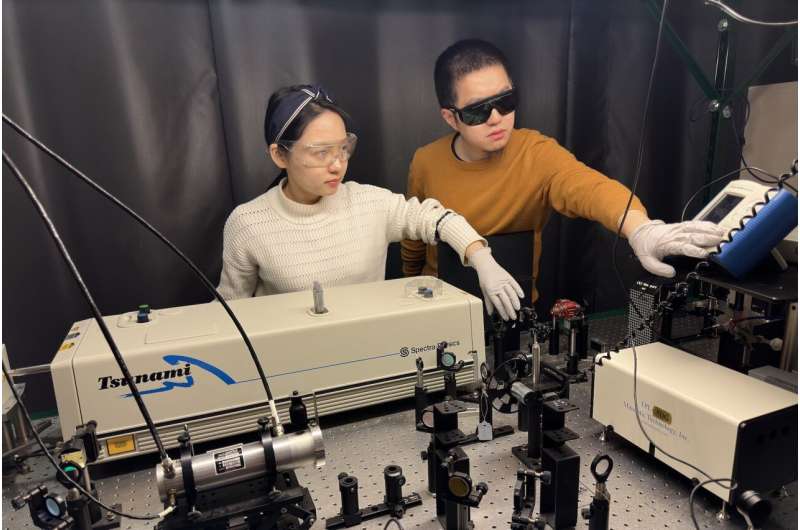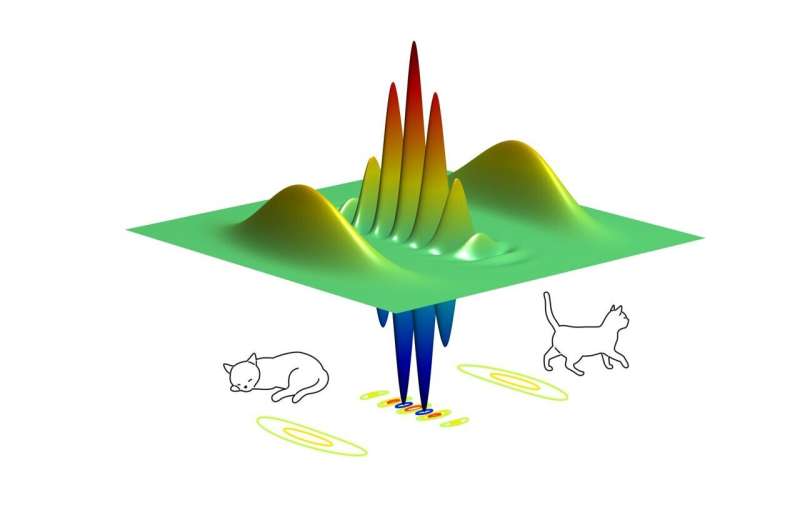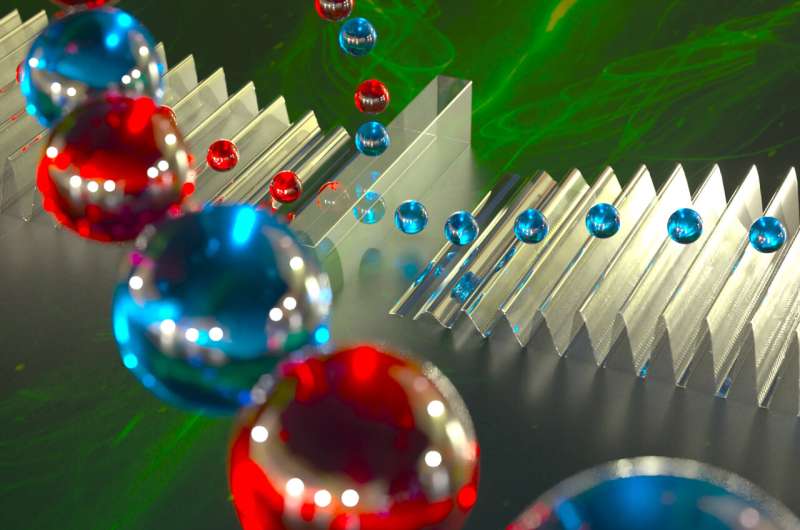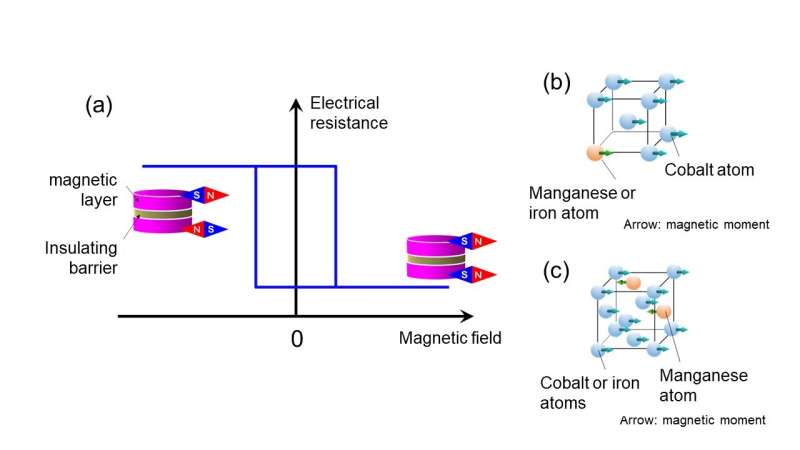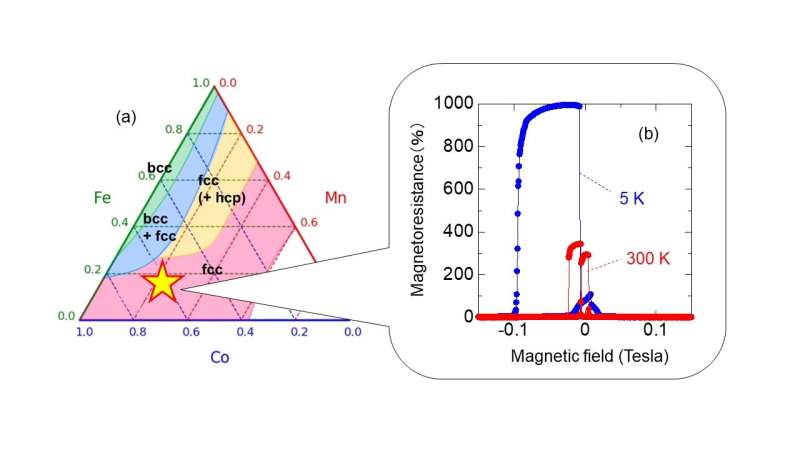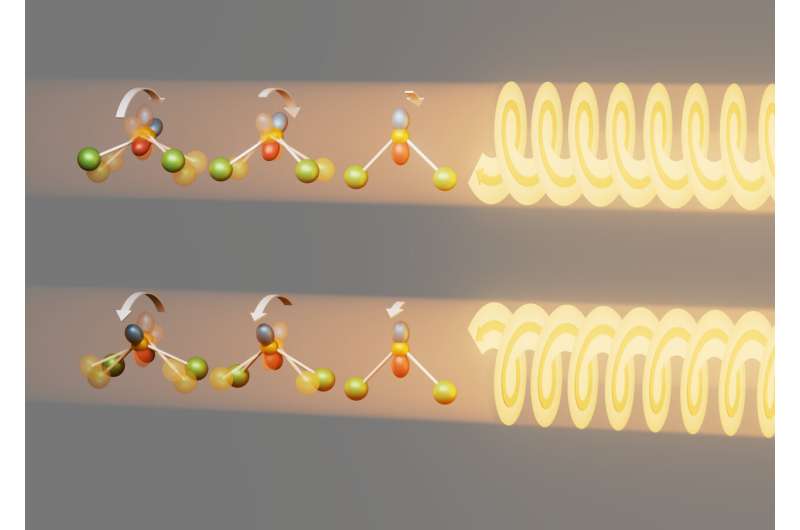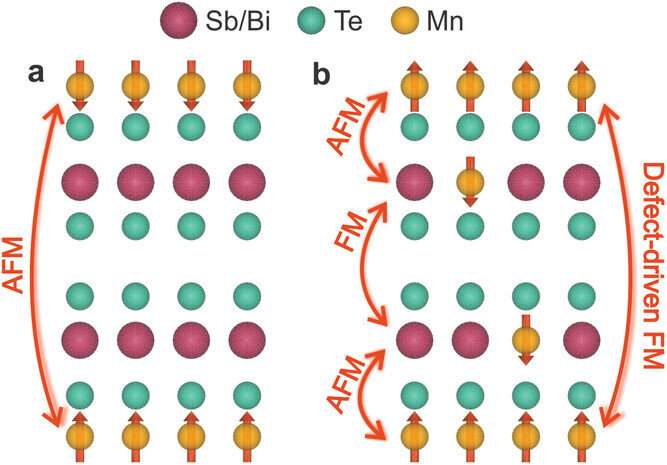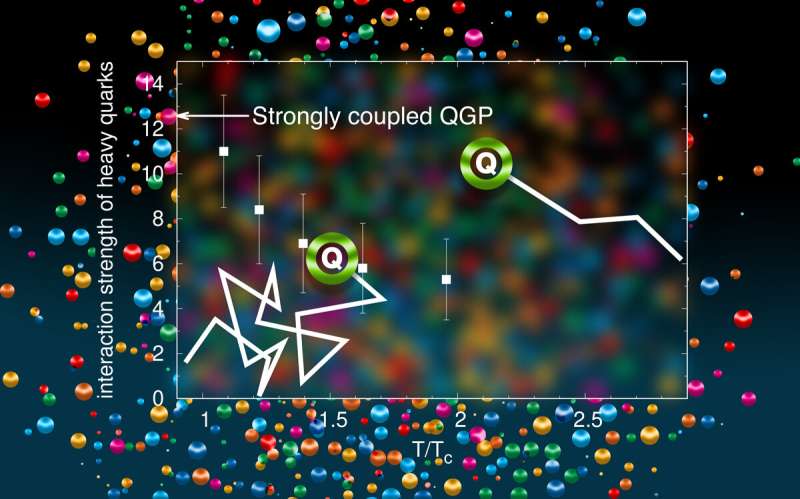
Using some of the world’s most powerful supercomputers, a group of theorists has produced a major advance in the field of nuclear physics—a calculation of the “heavy quark diffusion coefficient.” This number describes how quickly a melted soup of quarks and gluons—the building blocks of protons and neutrons, which are set free in collisions of nuclei at powerful particle colliders—transfers its momentum to heavy quarks.
The answer, it turns out, is very fast. As described in a paper just published in Physical Review Letters, the momentum transfer from the “freed up” quarks and gluons to the heavier quarks occurs at the limit of what quantum mechanics will allow. These quarks and gluons have so many short-range, strong interactions with the heavier quarks that they pull the “boulder”-like particles along with their flow.
The work was led by Peter Petreczky and Swagato Mukherjee of the nuclear theory group at the U.S. Department of Energy’s Brookhaven National Laboratory, and included theorists from the Bielefeld, Regensburg, and Darmstadt Universities in Germany, and the University of Stavanger in Norway.
The calculation will help explain experimental results showing heavy quarks getting caught up in the flow of matter generated in heavy ion collisions at the Relativistic Heavy Ion Collider (RHIC) at Brookhaven and the Large Hadron Collider (LHC) at Europe’s CERN laboratory. The new analysis also adds corroborating evidence that this matter, known as a “quark-gluon plasma” (QGP), is a nearly perfect liquid, with a viscosity so low that it also approaches the quantum limit.
“Initially, seeing heavy quarks flow with the QGP at RHIC and the LHC was very surprising,” Petreczky said. “It would be like seeing a heavy rock get dragged along with the water in a stream. Usually, the water flows but the rock stays.”
The new calculation reveals why that surprising picture makes sense when you think about the extremely low viscosity of the QGP.
Frictionless flow
The low viscosity of matter generated in RHIC’s collisions of gold ions, first reported on in 2005, was a major motivator for the new calculation, Petreczky said. When those collisions melt the boundaries of individual protons and neutrons to set free the inner quarks and gluons, the fact that the resulting QGP flows with virtually no resistance is evidence that there are many strong interactions among the quarks and gluons in the hot quark soup.
“The low viscosity implies that the ‘mean free path’ between the ‘melted’ quarks and gluons in the hot, dense QGP is extremely small,” said Mukherjee, explaining that the mean free path is the distance a particle can travel before interacting with another particle.
“If you think about trying to walk through a crowd, it’s the typical distance you can get before you bump into someone or have to change your course,” he said.
With a short mean free path, the quarks and gluons interact frequently and strongly. The collisions dissipate and distribute the energy of the fast-moving particles and the strongly interacting QGP exhibits collective behavior—including nearly frictionless flow.
“It’s much more difficult to change the momentum of a heavy quark because it’s like a train—hard to stop,” Mukherjee noted. “It would have to undergo many collisions to get dragged along with the plasma.”
But if the QGP is indeed a perfect fluid, the mean free path for the heavy quark interactions should be short enough to make that possible. Calculating the heavy quark diffusion coefficient—which is proportional to how strongly the heavy quarks are interacting with the plasma—was a way to check this understanding.
Crunching the numbers
The calculations needed to solve the equations of quantum chromodynamics (QCD)—the theory that describes quark and gluon interactions—are mathematically complex. Several advances in theory and powerful supercomputers helped to pave the way for the new calculation.
“In 2010/11 we started using a mathematical shortcut, which assumed the plasma consisted only of gluons, no quarks,” said Olaf Kaczmarek of Bielefeld University, who led the German part of this effort. Thinking only of gluons helped the team to work out their method using lattice QCD. In this method, scientists run simulations of particle interactions on a discretized four-dimensional space-time lattice.
Essentially, they “place” the particles on discrete positions on an imaginary 3D grid to model their interactions with neighboring particles and see how those interactions change over time (the 4th dimension). They use many different starting arrangements and include varying distances between particles.
After working out the method with only gluons, they figured out how to add in the complexity of the quarks.
The scientists loaded a large number of sample configurations of quarks and gluons onto the 4D lattice and used Monte Carlo methods—repeated random sampling—to try to find the most probable distribution of quarks and gluons within the lattice.
“By averaging over those configurations, you get a correlation function related to the heavy quark diffusion coefficient,” said Luis Altenkort, a University of Bielefeld graduate student who also worked on this research at Brookhaven Lab.
As an analogy, think about estimating the air pressure in a room by sampling the positions and motion of the molecules. “You try to use the most probable distributions of molecules based on another variable, such as temperature, and exclude improbable configurations—such as all the air molecules being clustered in one corner of the room,” Altenkort said.
In the case of the QGP, the scientists were trying to simulate a thermalized system—where even on the tiny-fraction-of-a-second timescale of heavy ion particle collisions, the quarks and gluons come to some equilibrium temperature.
They simulated the QGP at a range of fixed temperatures and calculated the heavy quark diffusion coefficient for each temperature to map out the temperature dependence of the heavy quark interaction strength (and the mean free path of those interactions).
“These demanding calculations were possible only by using some of the world’s most powerful supercomputers,” Kaczmarek said.
The computing resources included Perlmutter at the National Energy Research for Scientific Computing Center (NERSC), a DOE Office of Science User Facility located at Lawrence Berkeley National Laboratory; Juwels Booster at the Juelich Research Center in Germany; Marconi at CINECA in Italy; and dedicated lattice QCD GPU clusters at Thomas Jefferson National Accelerator Facility (Jefferson Lab) and at Bielefeld University.
As Mukherjee noted, “These powerful machines don’t just do the job for us while we sit back and relax; it took years of hard work to develop the codes that can squeeze the most efficient performance out of these supercomputers to do our complex calculations.”
Rapid thermalization, short-range interactions
The calculations show that the heavy quark diffusion coefficient is largest right at the temperature at which the QGP forms, and then decreases with increasing temperatures. This result implies that the QGP comes to an equilibrium extremely rapidly.
“You start with two nuclei, with essentially no temperature, then you collide them and in less than one quadrillionth of a second, you get a thermal system,” Petreczky said. Even the heavy quarks get thermalized.
For that to happen, the heavy quarks have to undergo many scatterings with other particles very quickly—implying that the mean free path of these interactions must be very small. Indeed, the calculations show that, at the transition to QGP, the mean free path of the heavy quark interactions is very close to the shortest distance allowable. That so-called quantum limit is established by the inherent uncertainty of knowing both a particle’s position and momentum simultaneously.
This independent “measure” provides corroborating evidence for the low viscosity of the QGP, substantiating the picture of its perfect fluidity, the scientists say.
“The shorter the mean free path, the lower the viscosity, and the faster the thermalization,” Petreczky said.
Simulating real collisions
Now that scientists know how the heavy quark interactions with the QGP vary with temperature, they can use that information to improve their understanding of how the actual heavy ion collision systems evolve.
“My colleagues are trying to develop more accurate simulations of how the interactions of the QGP affect the motion of heavy quarks,” Petreczky said. “To do that, they need to take into account the dynamical effects of how the QGP expands and cools down—all the complicated stages of the collisions.”
“Now that we know how the heavy quark diffusion coefficient changes with temperature, they can take this parameter and plug it into their simulations of this complicated process and see what else needs to be changed to make those simulations compatible with the experimental data at RHIC and the LHC.”
This effort is the subject of a major collaboration known as the Heavy-Flavor Theory (HEFTY) for QCD Matter Topical Theory Collaboration.
“We’ll be able to better model the motion of heavy quarks in the QGP, and then have a better theory to data comparison,” Petreczky said.
More information: Luis Altenkort et al, Heavy Quark Diffusion from 2+1 Flavor Lattice QCD with 320 MeV Pion Mass, Physical Review Letters (2023). DOI: 10.1103/PhysRevLett.130.231902
Journal information: Physical Review Letters
Provided by Brookhaven National Laboratory







